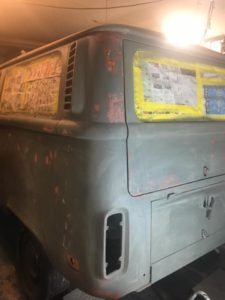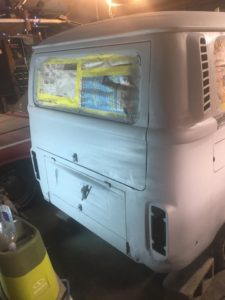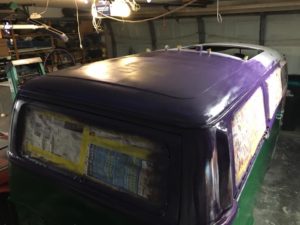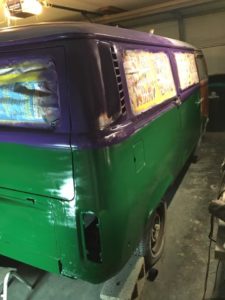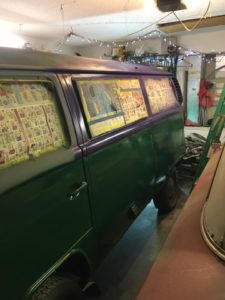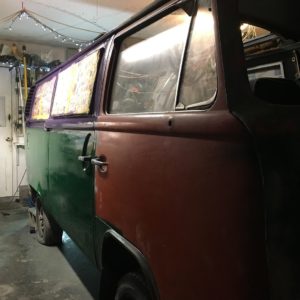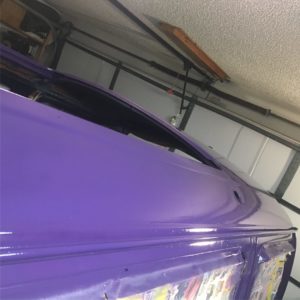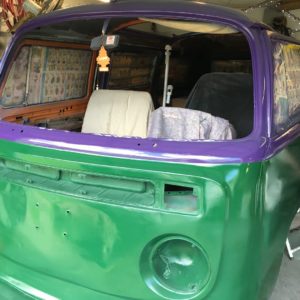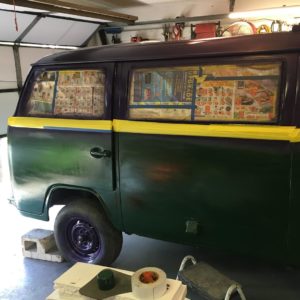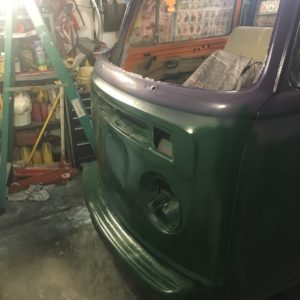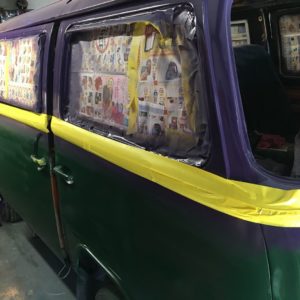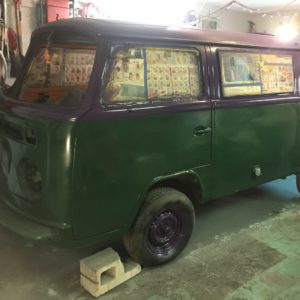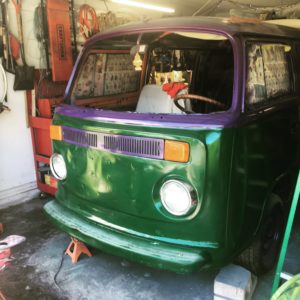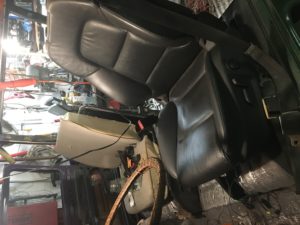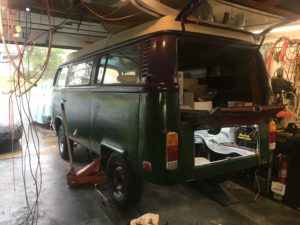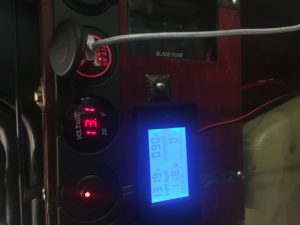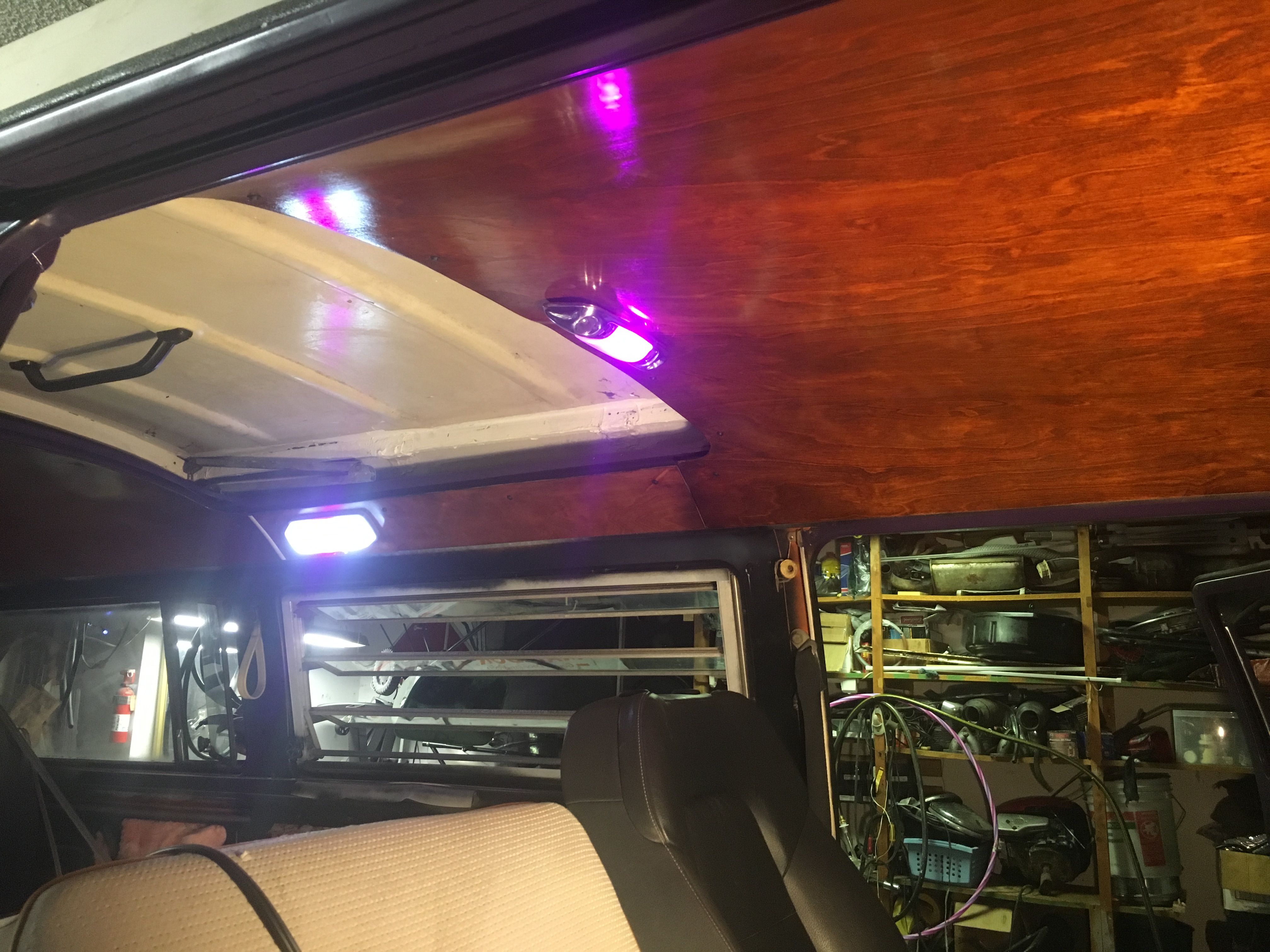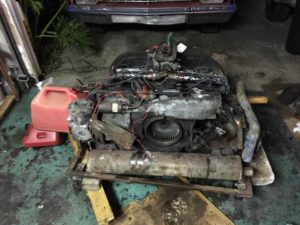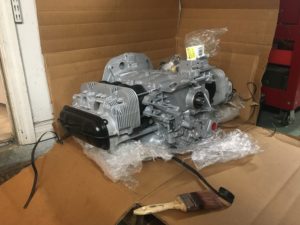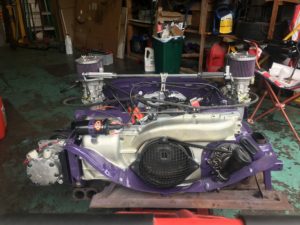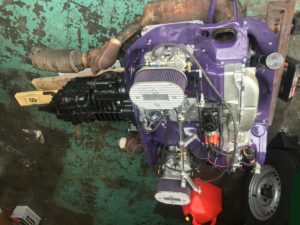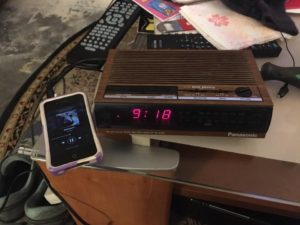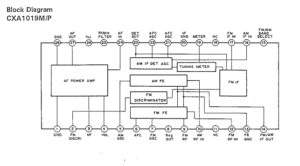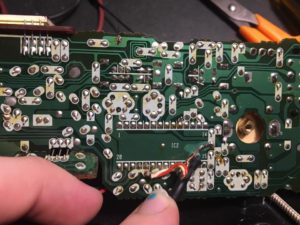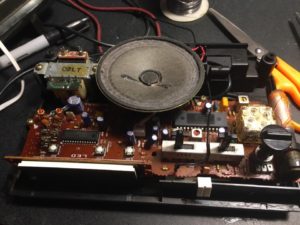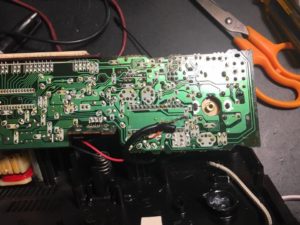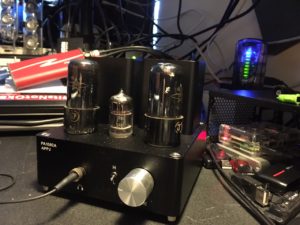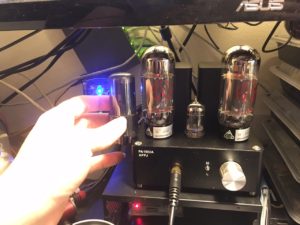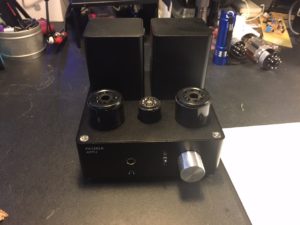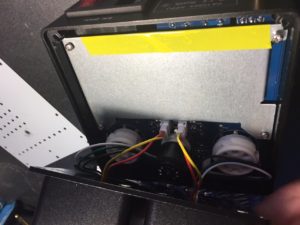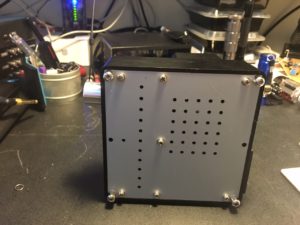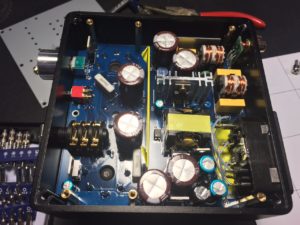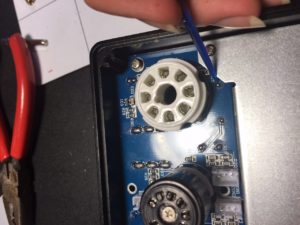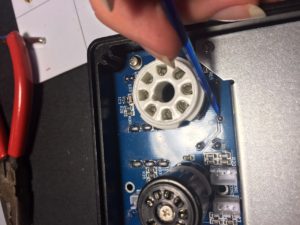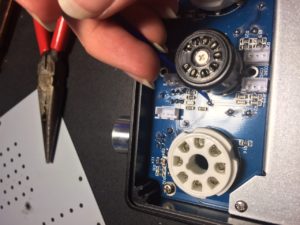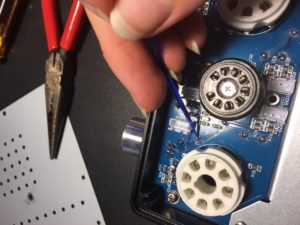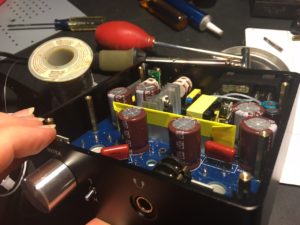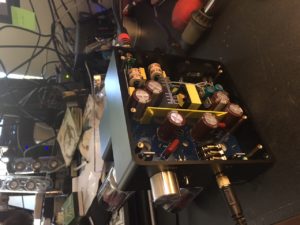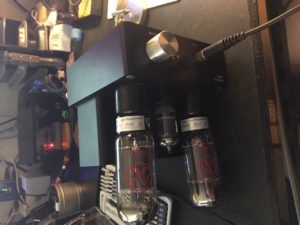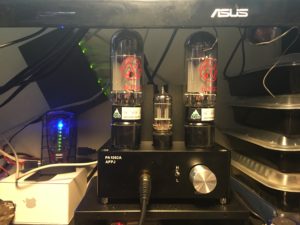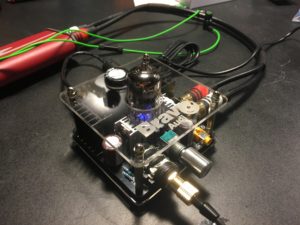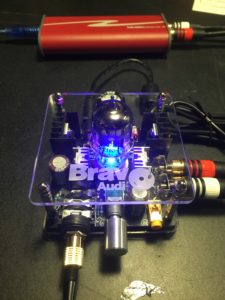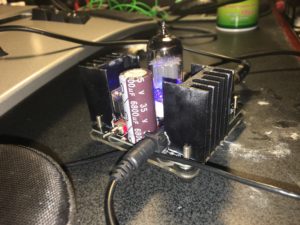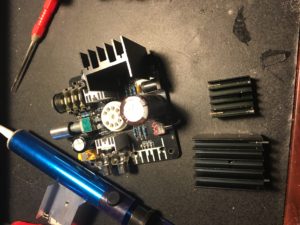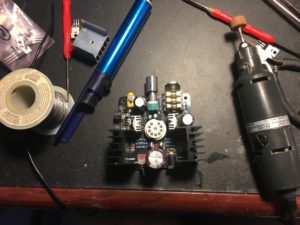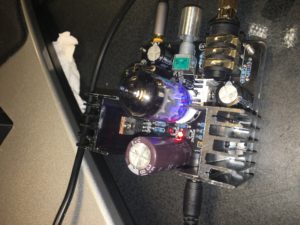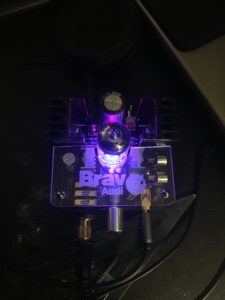In a previous post I mentioned starting the reassembly of my 1973 VW Westfalia camper, aka the bus. I originally had plans to completely customize the bus, even planned a custom dash. Over the years I had considered making it electric, throwing a modern 2.0T like my Audi has into it, and of course putting a diesel motor (OM616 w/turbo) from a Benz into it. Those plans never came to fruition, but other plans started to form.
Seven years ago I was blessed with the luck of the Irish and able to obtain a running VW type 4 2.0l w/AC out of a ’79 panel van that had been scrapped for parts. This motor would bolt right into my bus, plus it came with a six rib transmission and a slew of extra parts, for a fraction of their value. I built an engine stand for the motor and was able to fire it up, made sure it ran, then stuck it where it fit in my garage.
My first goal with the bus was to fix the body work. I started simple, banging out damage to the sliding door. The door would fall off and smash up the corner. Fixed the slider, fixed the smashed corner, then started work on the front clip.
The nose of the bus had been smashed in badly, the passenger door wouldn’t open plus the heat vents couldn’t be reinstalled. Using a slide hammer back in 2011, I pulled most of the accident damage out and was working on fixing the door area when my wrist issues began to act up. Carpel tunnel is painful, add the guyon’s canel to it and the pain becomes unbearable. I gave up on the bus, hoping that in a few years I may be strong enough to resume.
Fall 2013 I moved to South Florida, throwing my most valuable bus pieces into boxes for storage, saying bye to my ’73 bus thinking I may never see it again. It was a good dream, one that I would revisit once resettled in South Florida and earning the big money. South Florida didn’t pan out quite that well, my house renters became squatters, eventually giving up on any house maintenance or cleaning, and I grew ever more broke trying to afford a mortgage and rent.
Fall 2016 I move back to my house, finding my bus, its title, and almost all the pieces intact. The bus had become a cockroach filled storage unit for old broken camping equipment and trash. Many of the interior pieces were covered in cockroach (and probably rodent feces), as was most of the garage. My plan is to fix and sell my house, and I’m highly allergic to every bit of filth and dirt inside the house and garage, so I am forced to clean everything. As the months go on I unpile the bus interior and mechanical pieces, and clean them up to find them all still in good shape, most needing minor to no repairs.
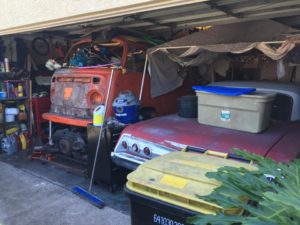
Winter, February 2017, the house repairs are coming along slowly, but well, but there are bus parts constantly getting in my way. So I bet myself I can do the body work and roadkill this bus back together. So one evening I take my scraper, paint stripper, and a blow torch to areas that have obvious bondo issues.
Nearly three months later and the body work is nearly done. The interior is read to have interior put in and most of the severe body damage and rust is repaired. There is accident damage to the front clip preventing the passenger door from opening and closing, but I’m stronger now, I can swing the heavy hammers without triggering a severe flare up. It’s going to be hard work to get that door to open and close properly, work I may not have the skills to do, but I’m trying.
As of today I have redone most of the interior pieces and restored the dash, the motor is still running, the transmission is cleaned up. Yesterday I quickly cleaned the Westy fiberglass pop-top and luggage rack, they look good. I have a new wiring harness ready to go in after I finish bodywork and paint. Today I refreshed the fuel storage system.
Over the past few weeks I cleaned out and re-sealed my fuel tank using the POR-15 fuel tank sealer kit along with a lot of muriatic acid (rust remover). I painted the outside of the tank, then stained it with other paint. I also replaced all the hardware, new fuel sender, fuel screen and line, all new fuel lines and clean brass pipes for connecting the tank to the fuel ventilation system. I also replaced the fuel filled neck, which was completely dried out and cracking. After 7 or 8 years the fuel tank is clean, sealed, and back in the bus ready for the motor and fresh fuel.
I also rescued my windshield from the side of the house scrap yard. When I began the rust repair I pulled out the windshield. The weather stripping was shot and there were many rust holes around the windshield. I carefully moved the windshield to the side of the house and put some beetle parts over it to keep it safe. Seven years later it is overgrown with grass and weeds, covered in dirt, and partially exposed., but undamaged. Cleaned up the windshield and moved it to a couch in my back room.
I’m close to being able to start paint. I need to finish the last of the body filler work, sanding, and priming, then I’ll start painting roof down. Due to work deadlines, cruicial house repairs, and fibro flareups, progress has slowed down over the past month. I want to have the bus in paint by the end of May, but I’ll be okay if it takes June. Then I can get the windshield in, reinstall the camper interior, and put the roof and luggage rack back on. At some point after that I have a nearly complete set of weather stripping to redo almost every window and door on the bus. Finally, I’ll be able to finish the automatic to manual conversion, do an engine rebuild, refresh the brakes, try to install AC, then I should have a running, driving bus.
I’m super excited ^_^
